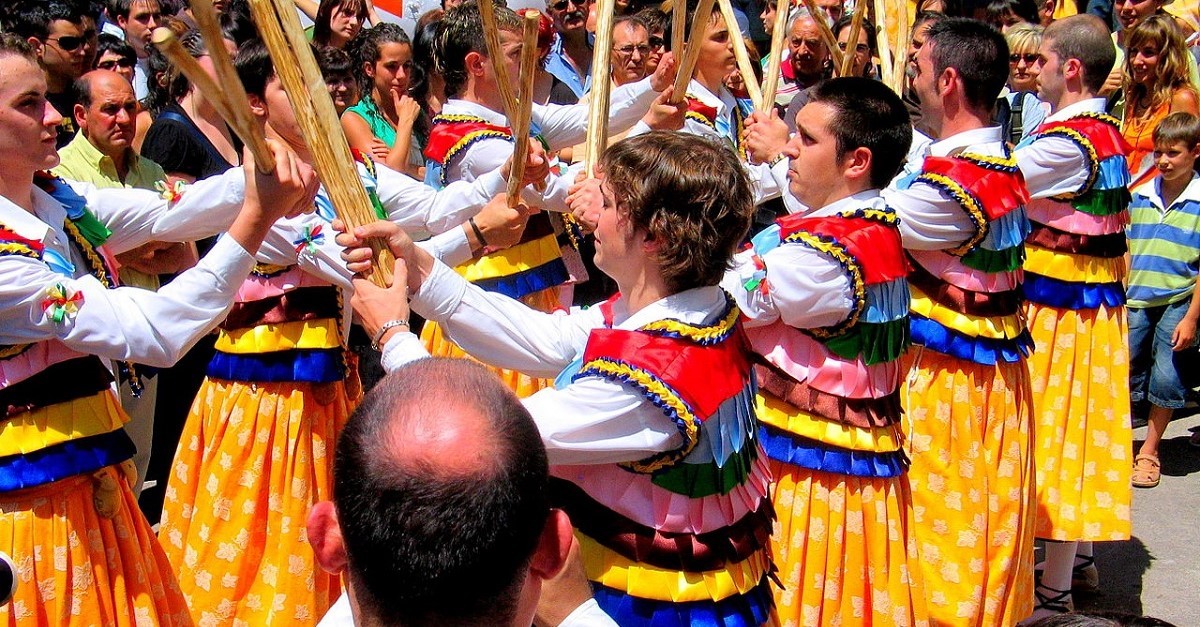
The Danza de los Zancos Stilt Dance
- When: 21st – 23rd July 2018
- Where: Anguiano, Spain
- Website: lariojaturismo.com
One of the most popular festivals in Spain’s La Rioja region is the Danza de los Zancos, or the Dance of the Stilts. Every 22nd July, the town of Anguiano hosts this ancestral rite to honour its patron saint, Mary Magdalene, on her patron saint's day.
The Stilt Dance harks back to pagan and religious rituals and has now become a traditional folklore festival in the north of the Spanish Peninsula. Read on to discover the origin and tradition of the popular Dance of the Stilts in Anguiano.
Anguiano, ancient Spanish town in La Rioja
Anguiano is a town in the Rioja Alta, located in the province of La Rioja, Spain. La Rioja, of course, is best known for its world-famous wines that are produced in the area, and the small town of Anguiano has its fair share.
It is characterised by its three neighbourhoods: the Cuevas district, traditionally occupied by cattle ranchers; Eras for the agricultural workers; and Mediavilla, the largest neighbourhood where you can find the Town Hall, the parish church and numerous houses belonging to the nobility.
If Anguiano is famous for anything, though, it is for its folkloric tradition. The Danza de los Zancos, held each and every year in the municipality, is an ancient ritual, the oldest in La Rioja.
Among the most outstanding monuments in the town are the Cuesta de los Danzadores (Dancers' Slope), a cobbled street where the popular stilt festival is held, the monastery of Valvarena, declared an Asset of Cultural Interest, and the famous Madre de Dios Bridge, which links the districts of Cuevas and Mediavilla and is considered one of the most spectacular in La Rioja.
What is the Danza de los Zancos?
The Stilt Dance is a popular folk festival held in Anguiano, La Rioja in honour of Mary Magdalene, patron saint of the municipality. The main celebration takes place every 22nd July, starting on the evening before and finishing the day after. However, the celebration is usually repeated on the last weekend of September.
The Dance of the Stilts was born with the aim of promoting good harvests, following pagan and religious rites. Over the years, however, it has become the true expression of the old Spanish folklore, keeping the centuries-old local traditions alive.
So what happens during the dance? Well, the dancers wear traditional clothes, such as colourful vests, skirts and petticoats, plus 50cm-high wooden stilts, tied on with ropes, which give the popular dance its name. Dressed up in their finest, the dancers then proceed to throw themselves into the cobbled streets and slopes of Anguiano, where they dance around, twirling like whirling Dervishes, to the rhythm of traditional pipes and drums.
Jumping and hopping on the uneven ground with their homemade stilts is pretty dangerous, of course, but the dancers train all year and are exceptionally talented, giving visitors to the town of Anguiano a real treat every July with this curious and truly one-of-a-kind festival.